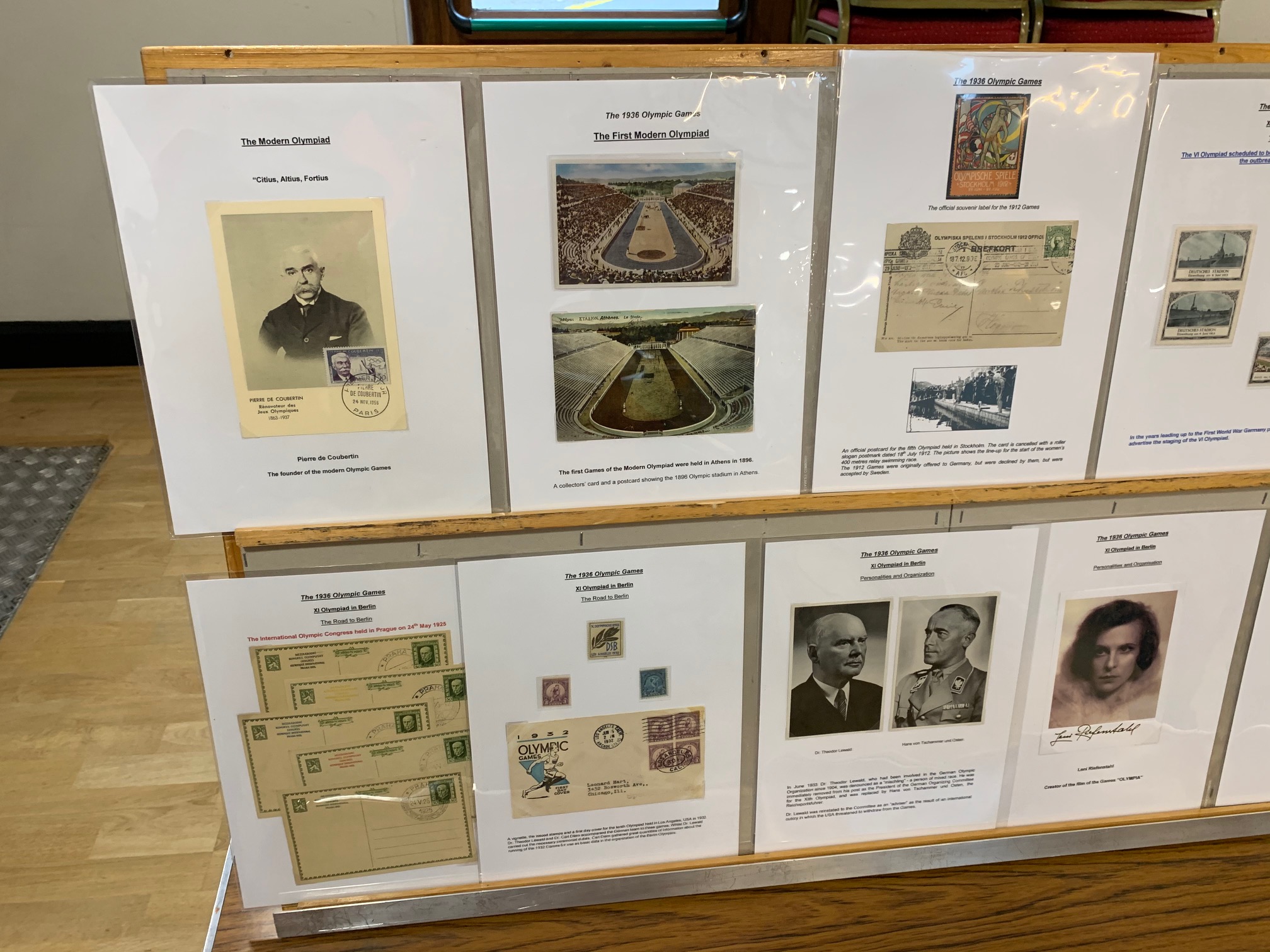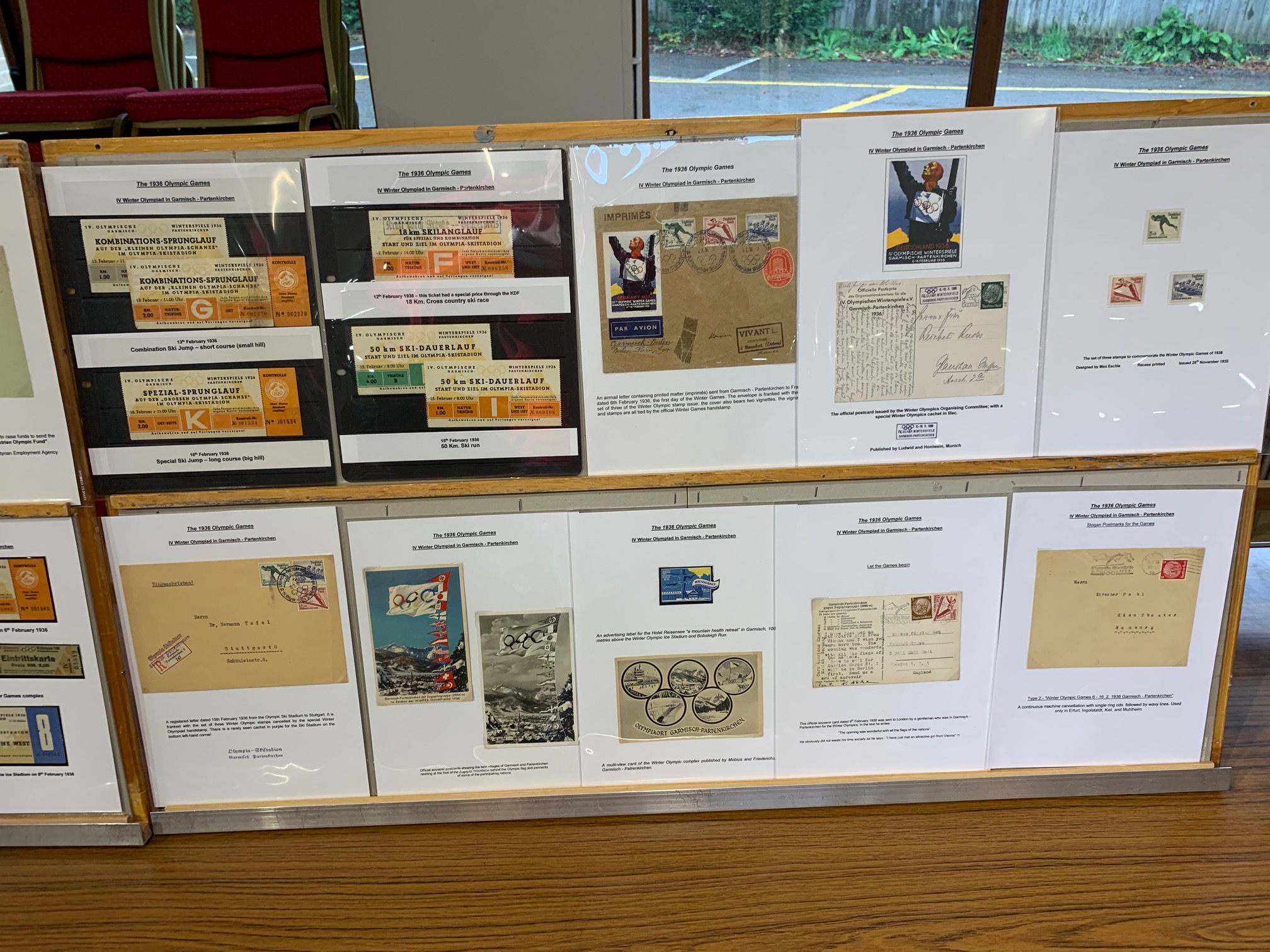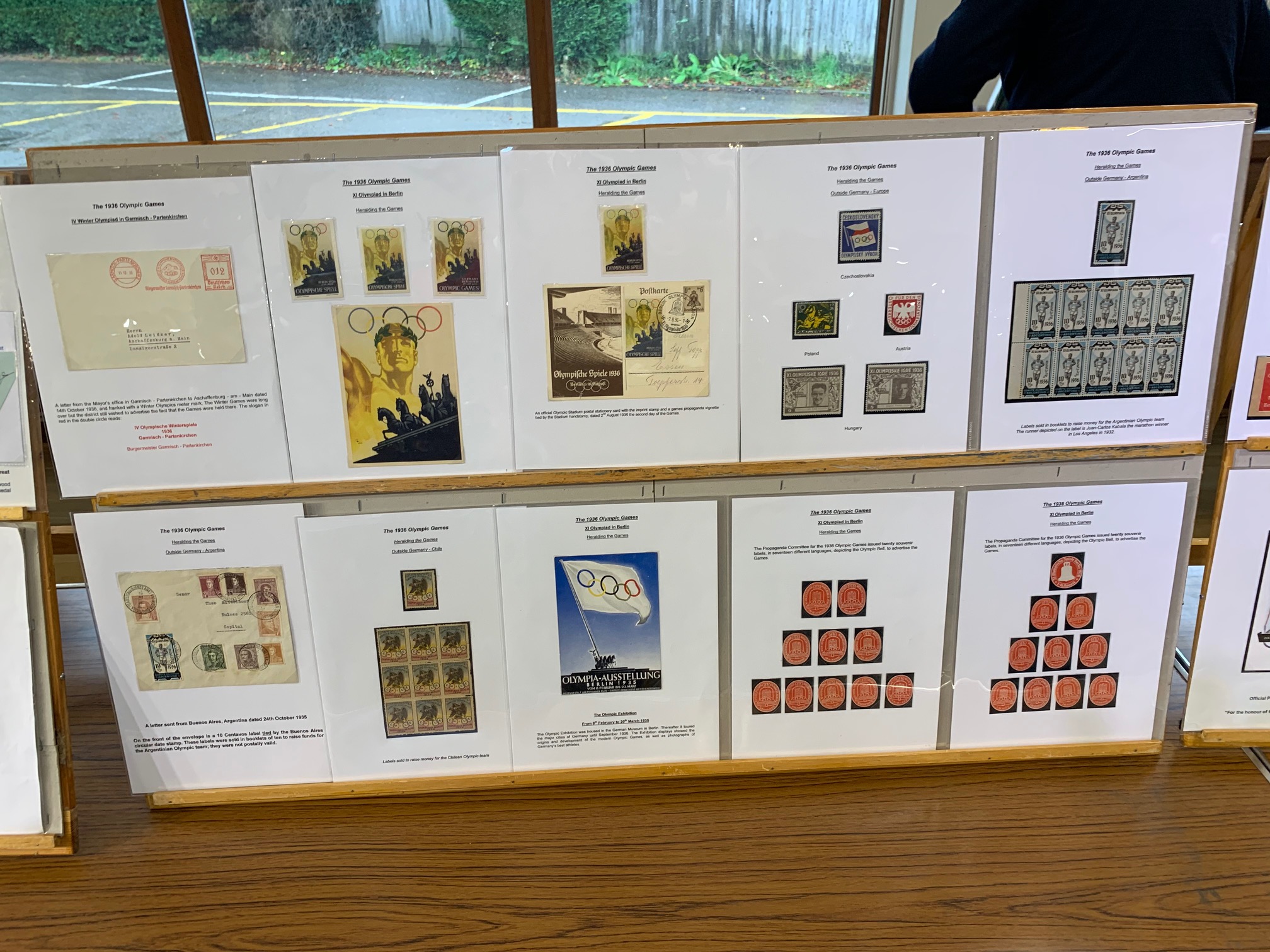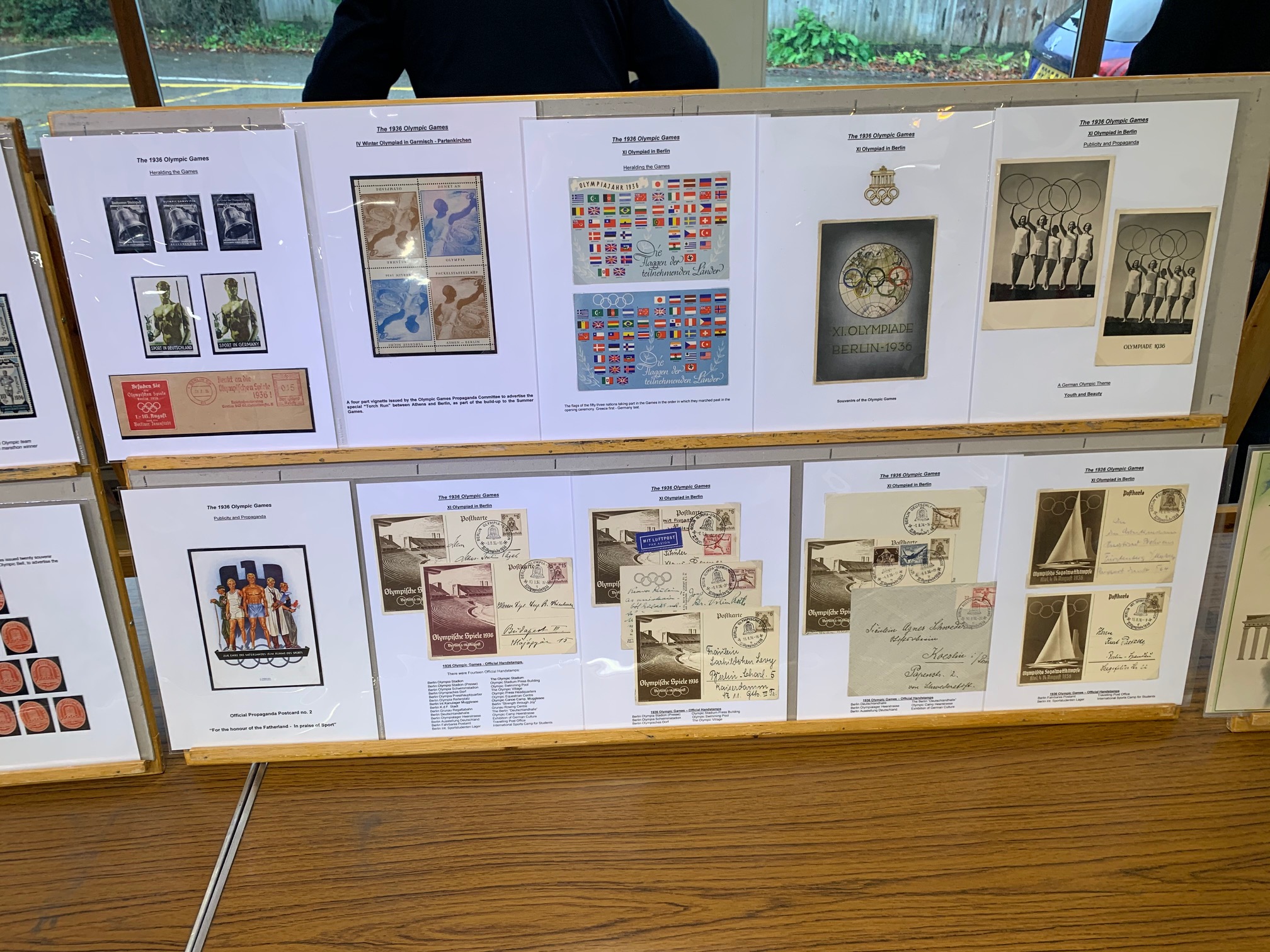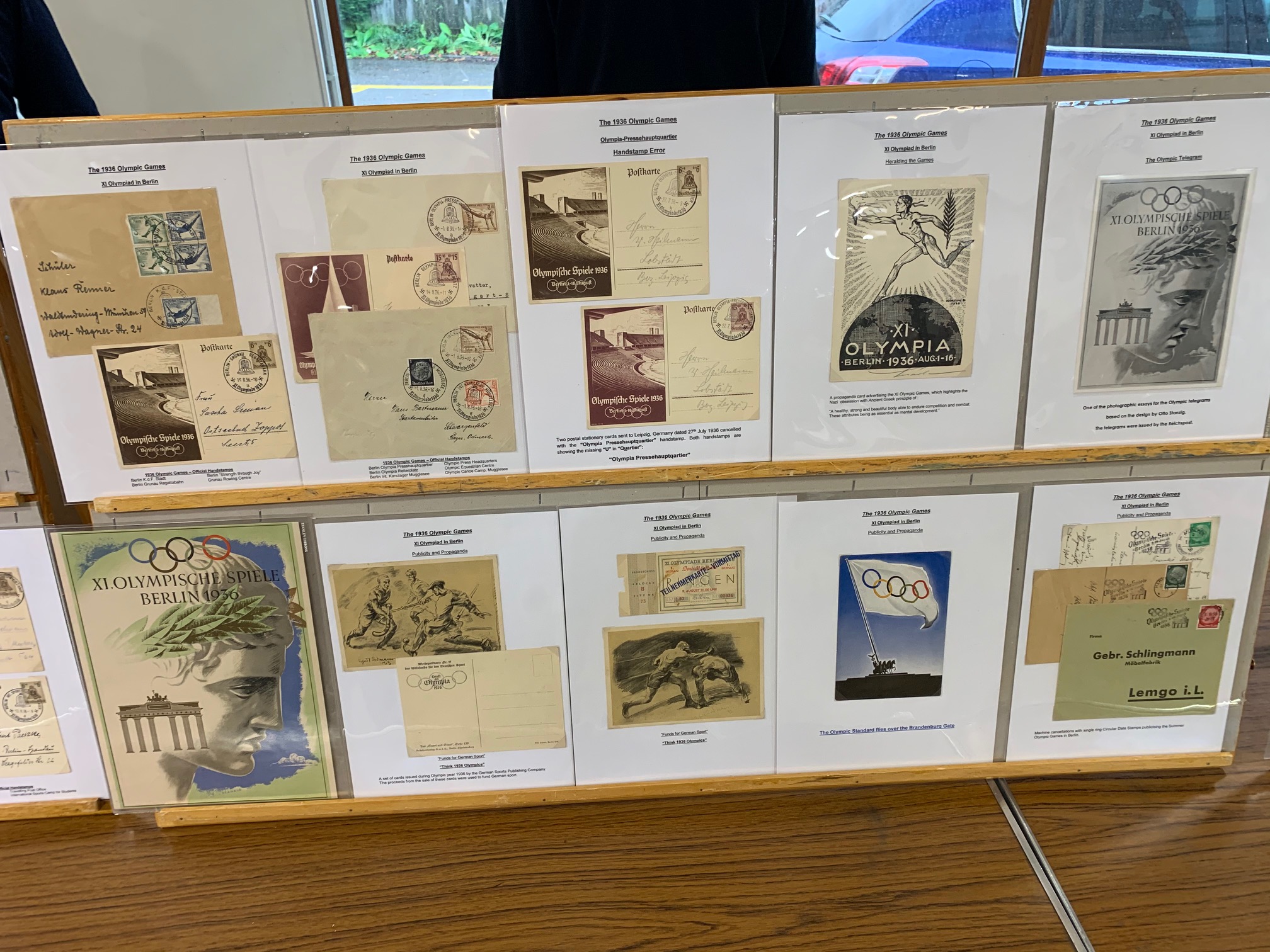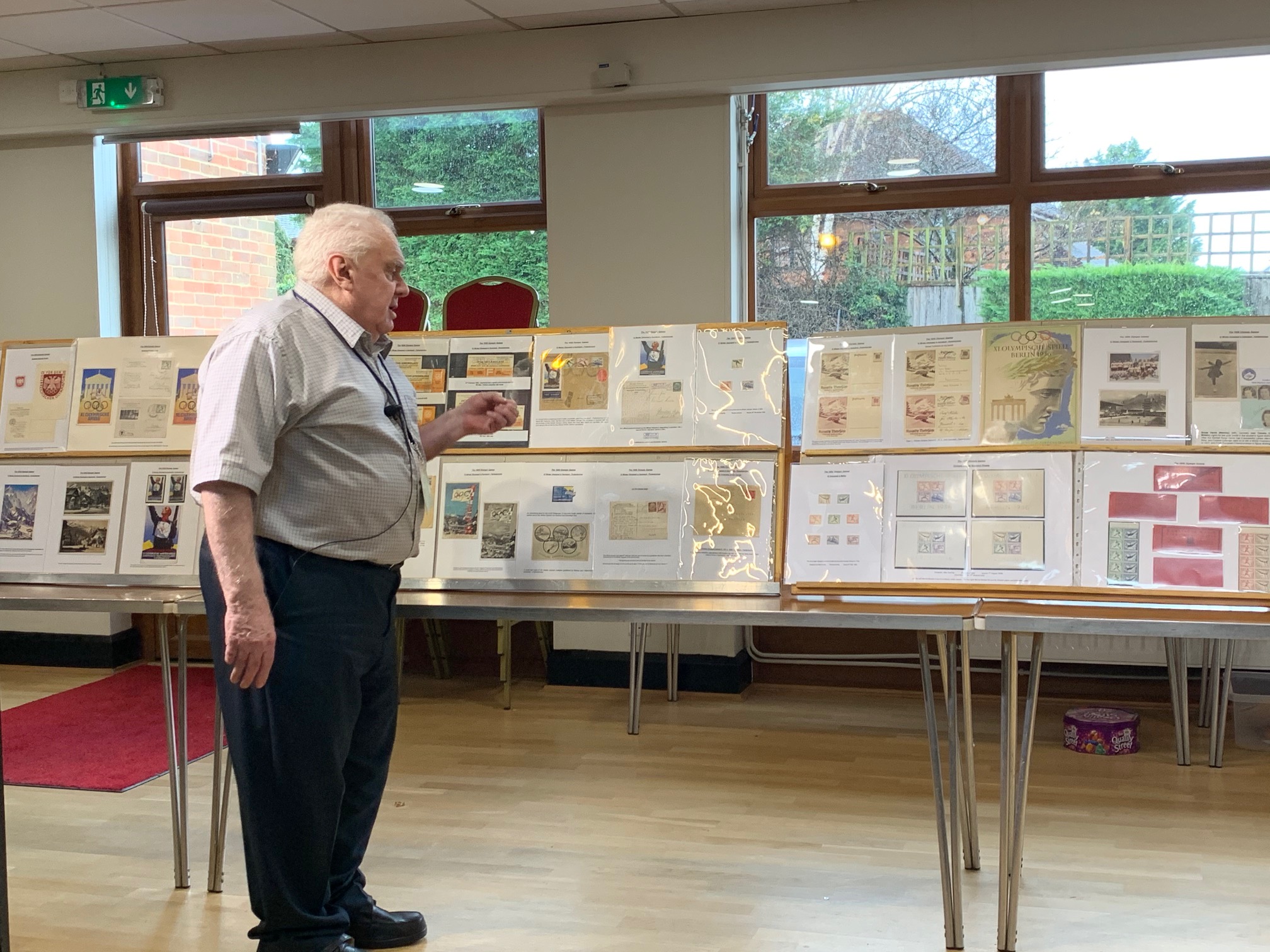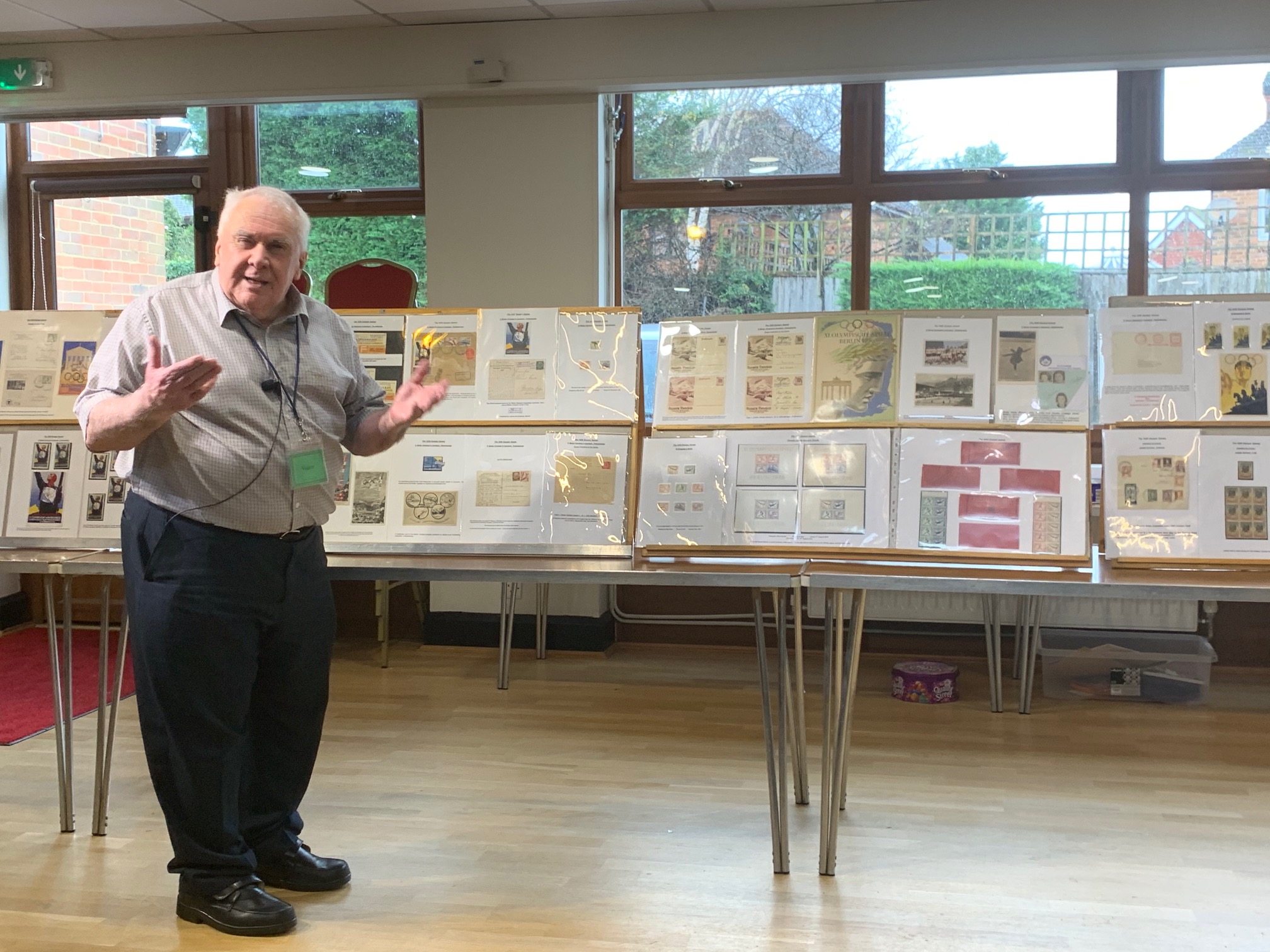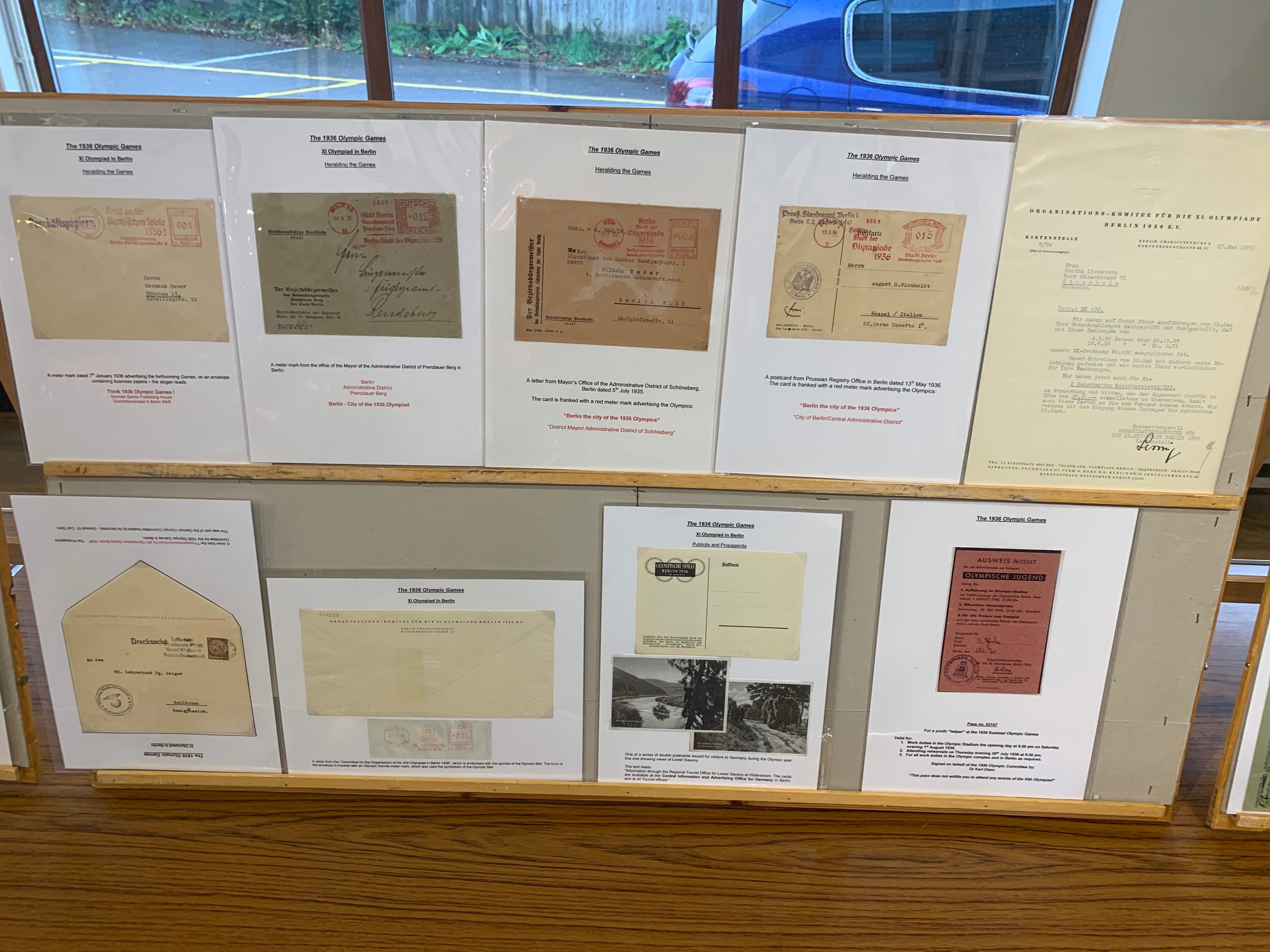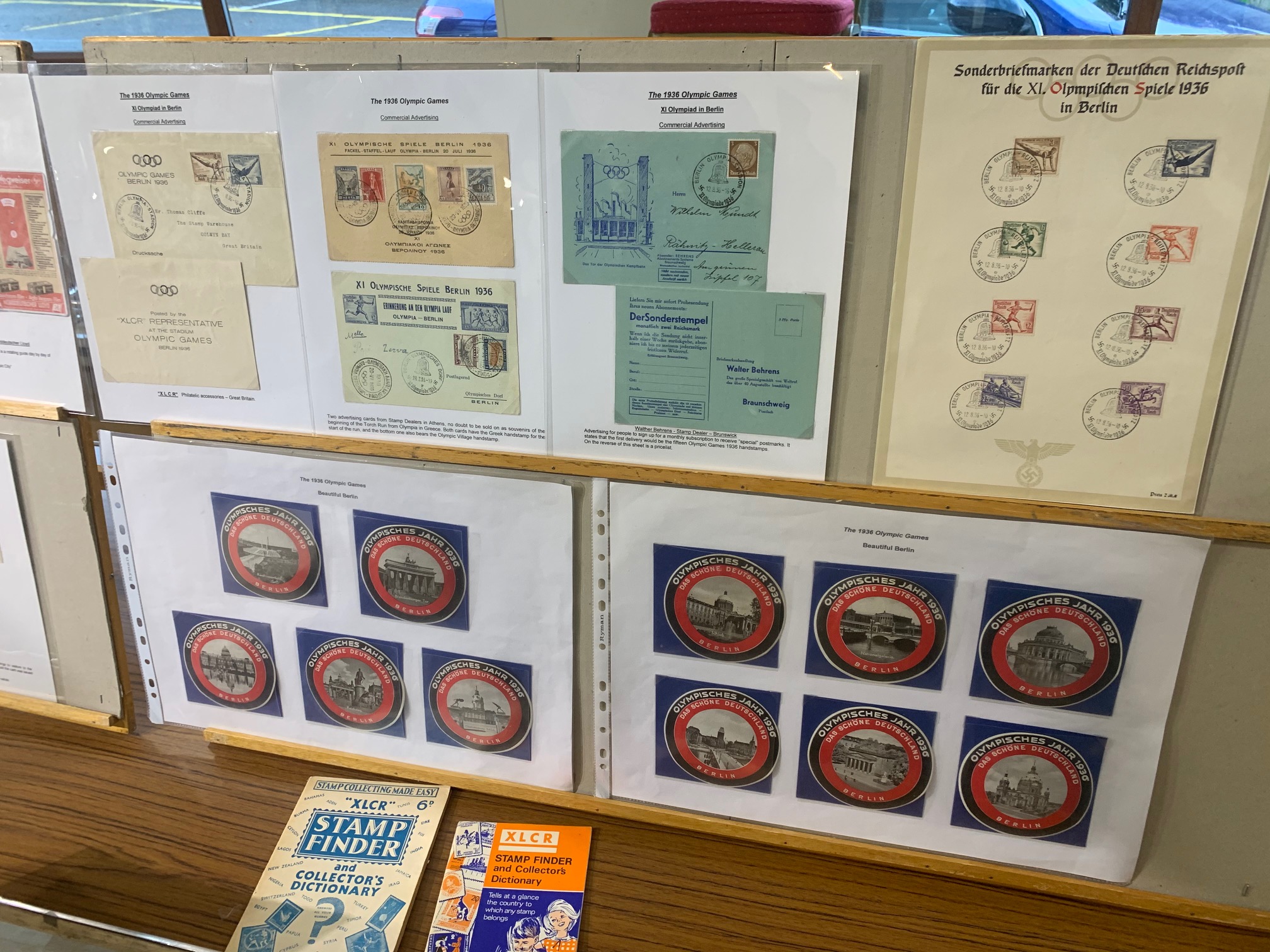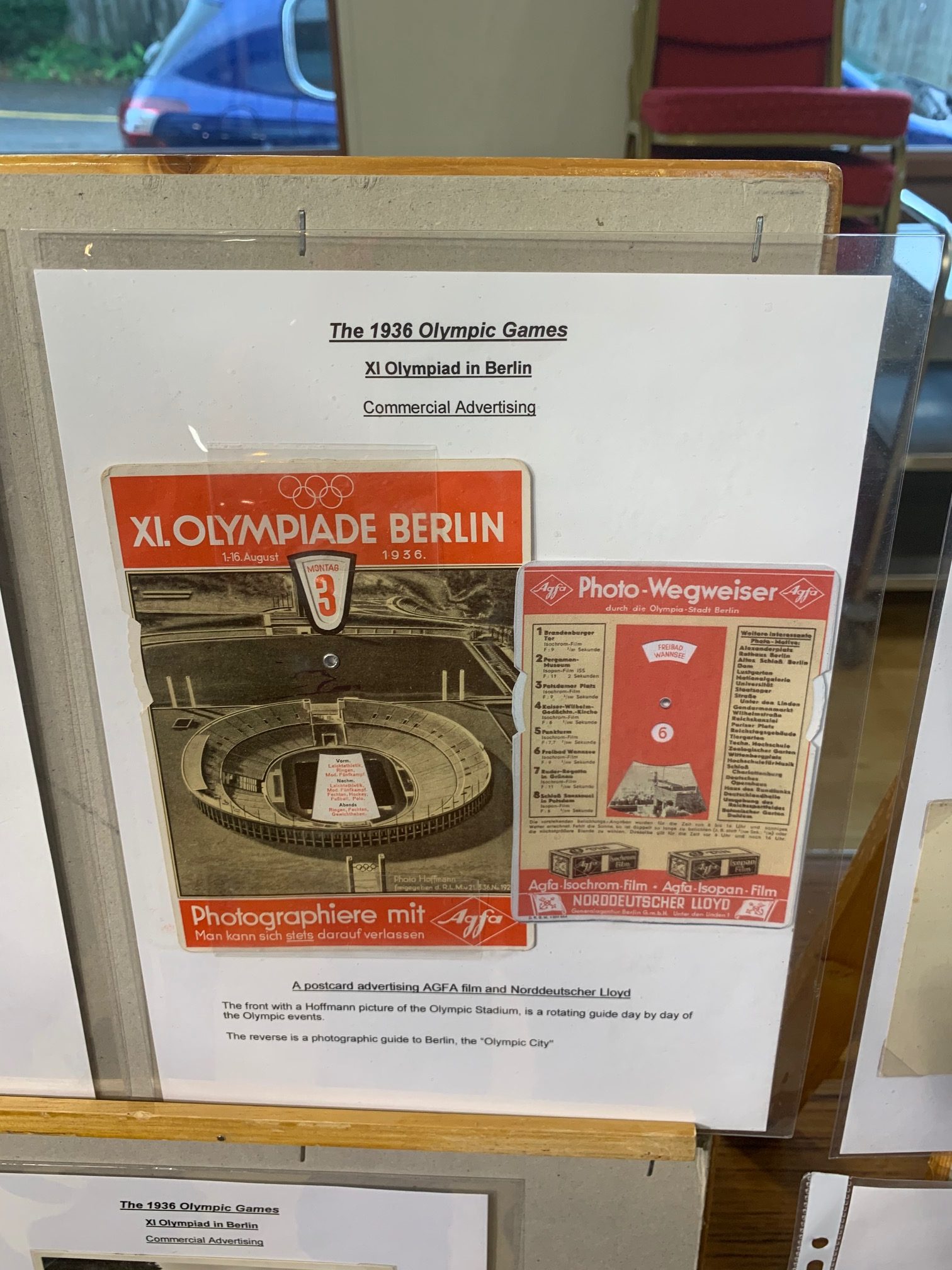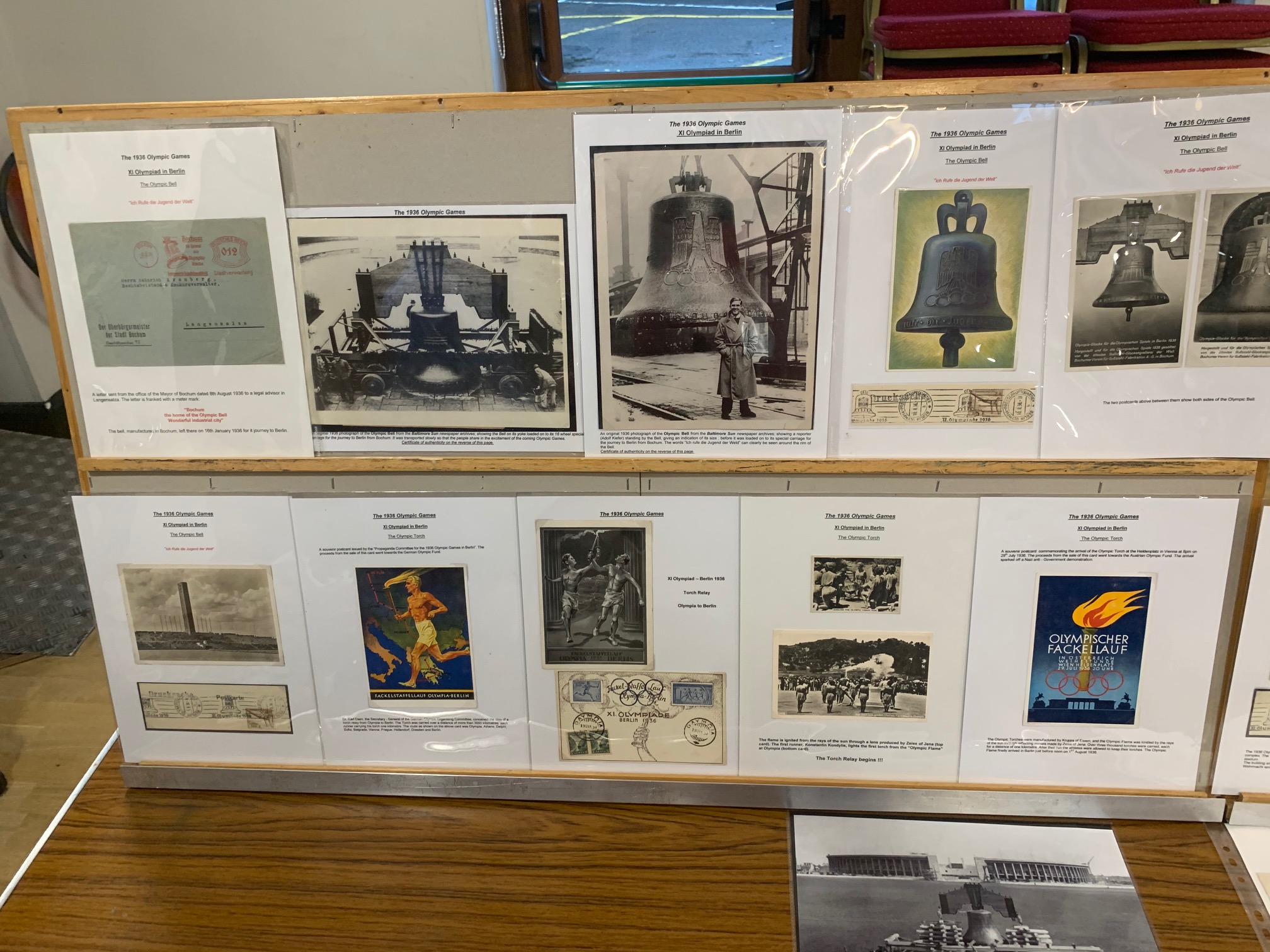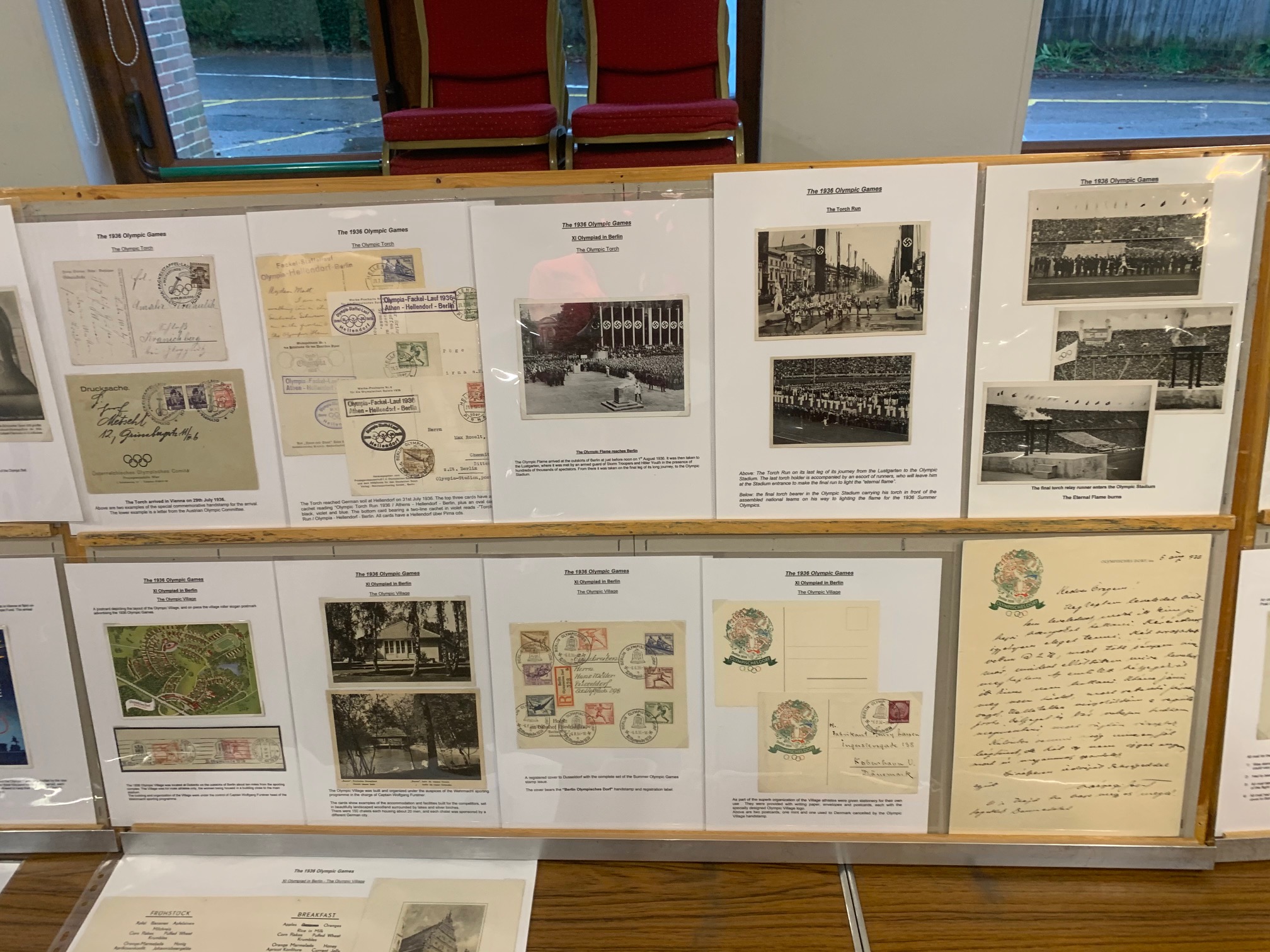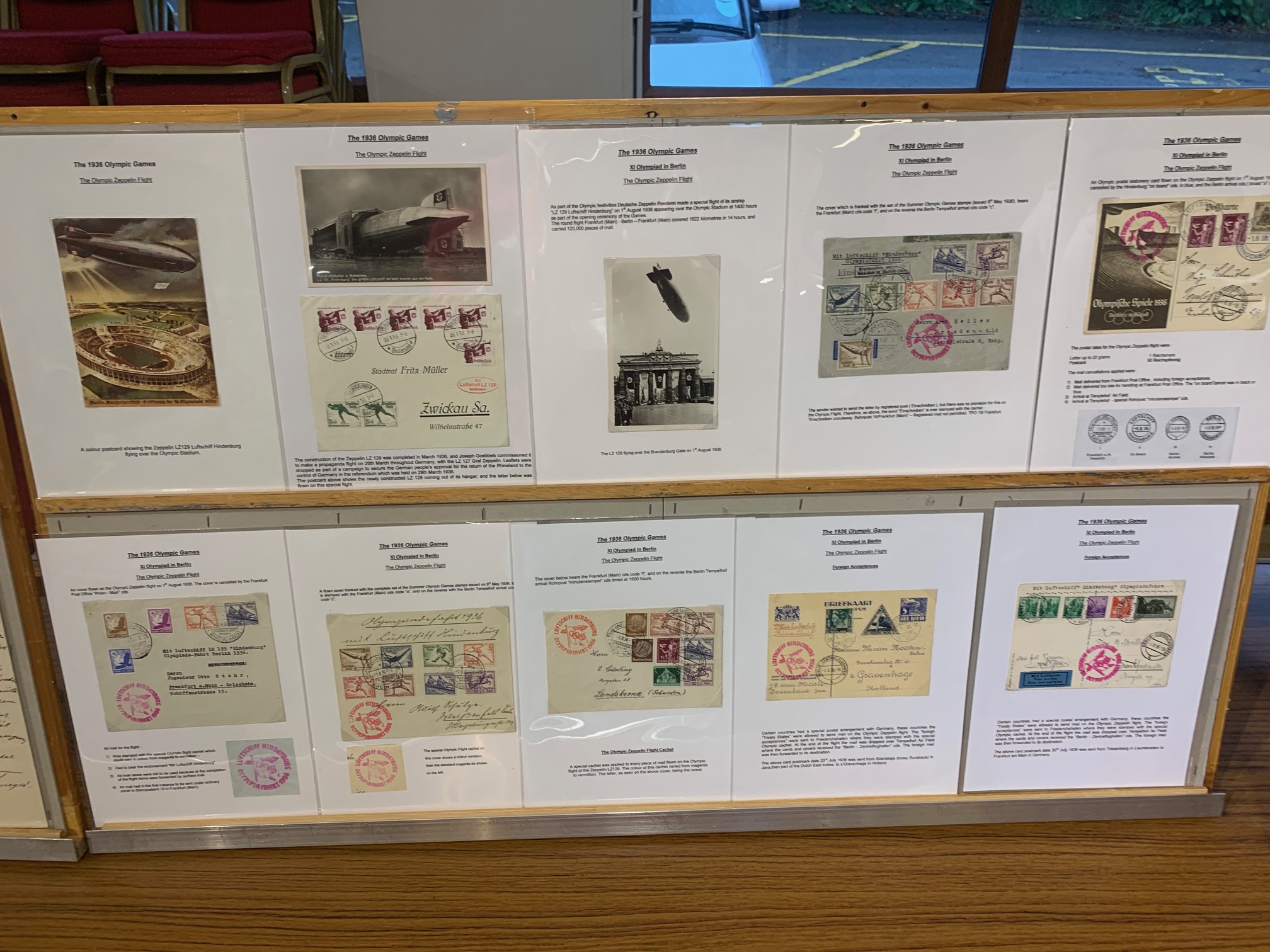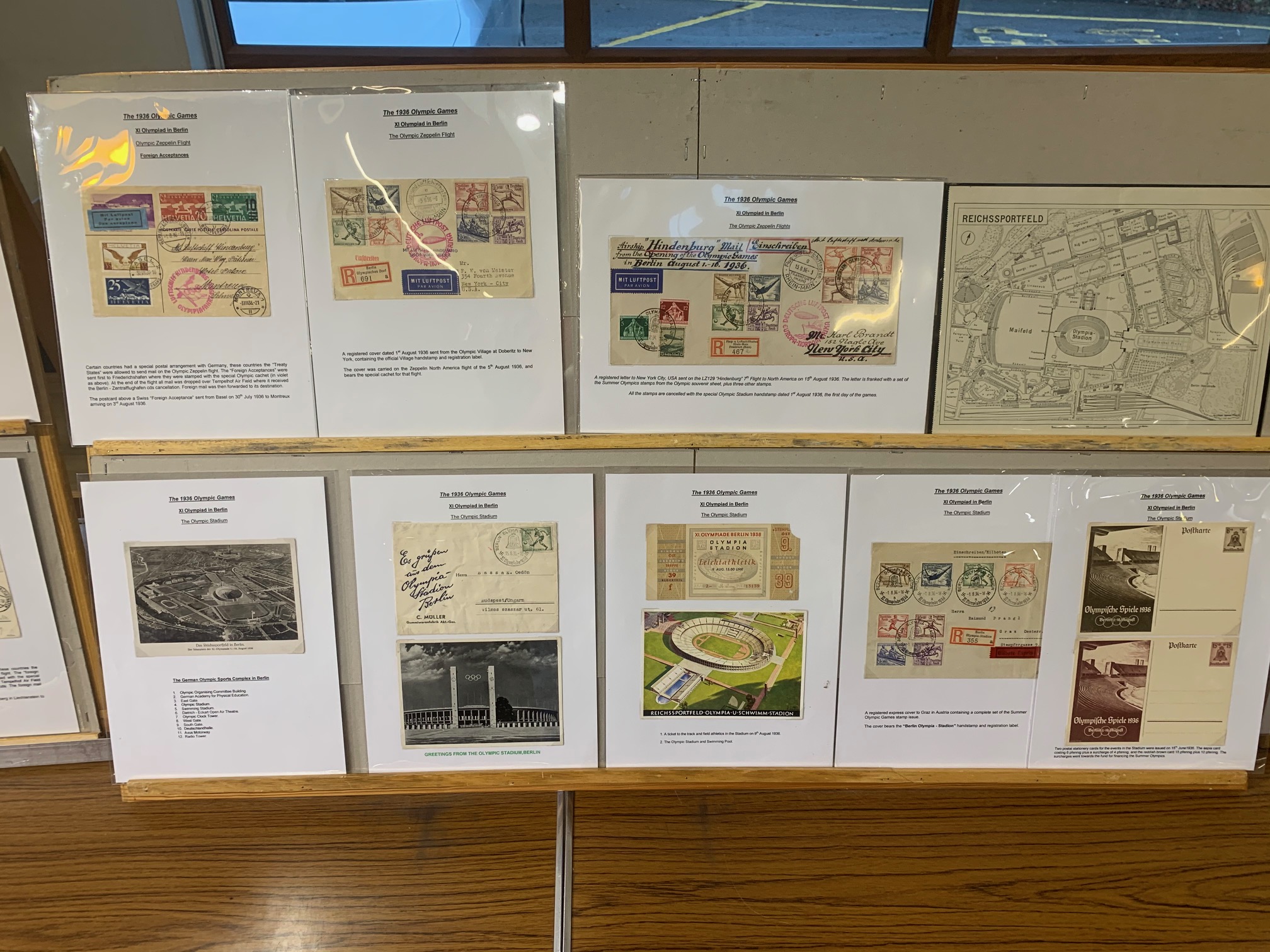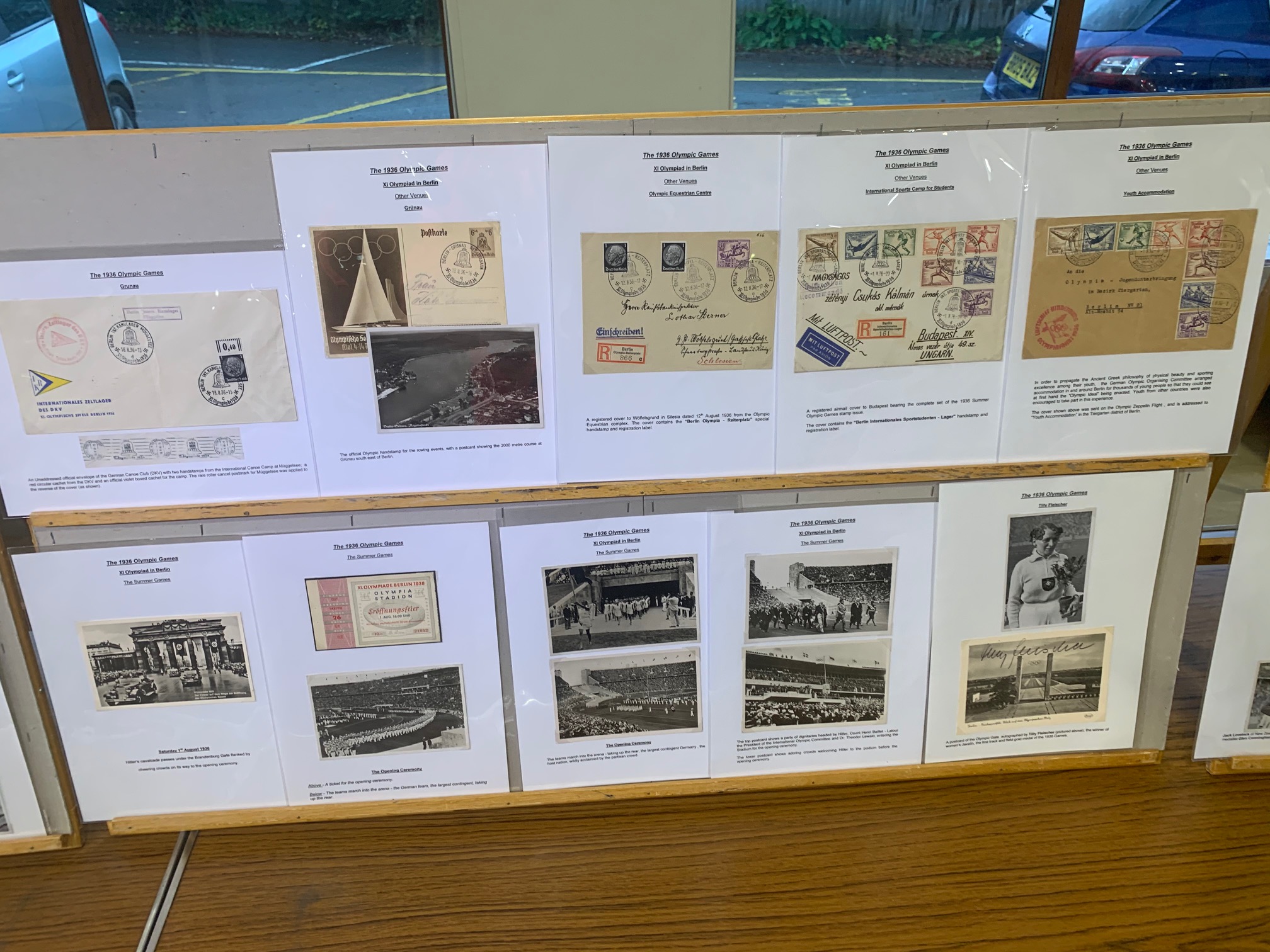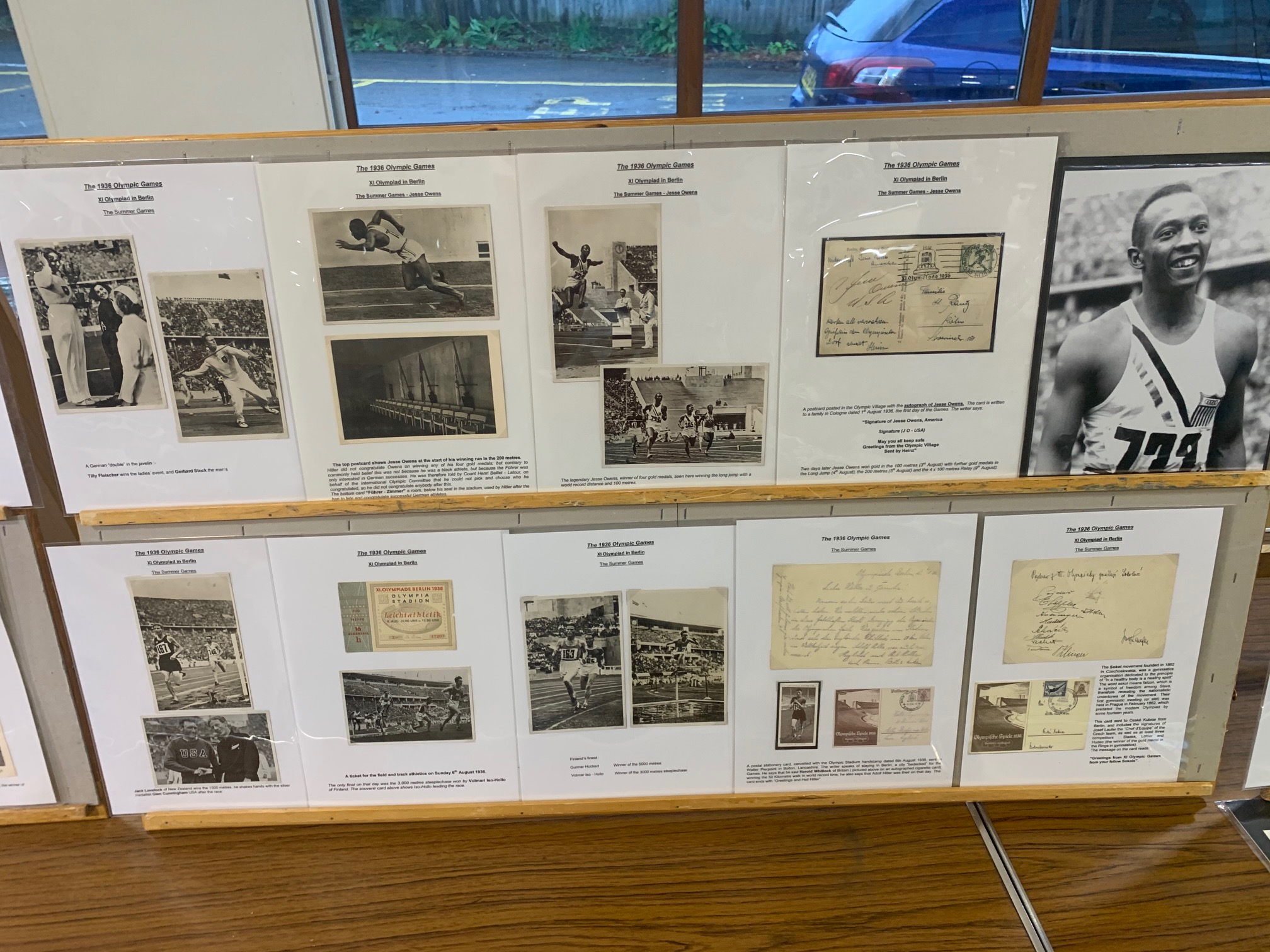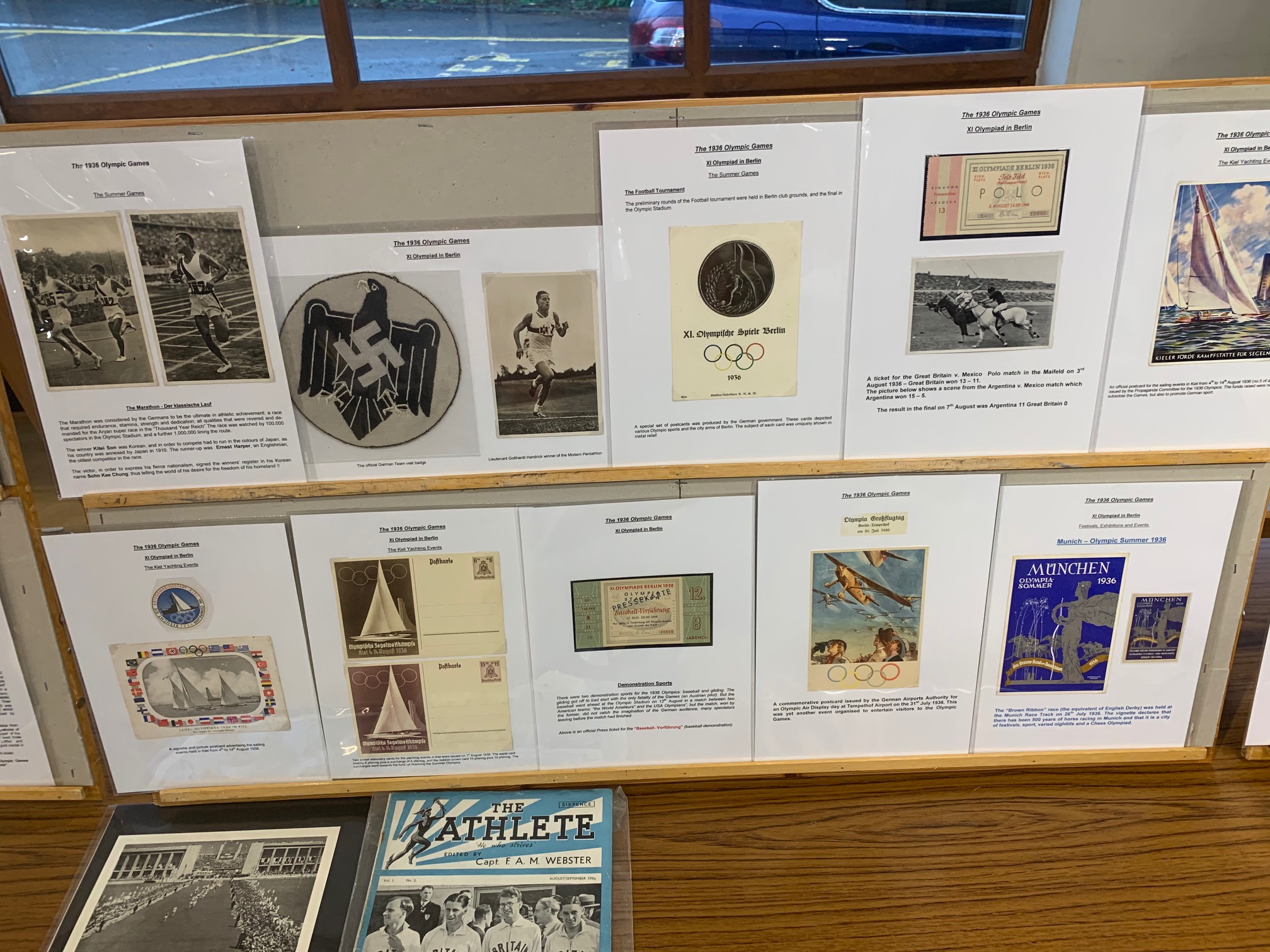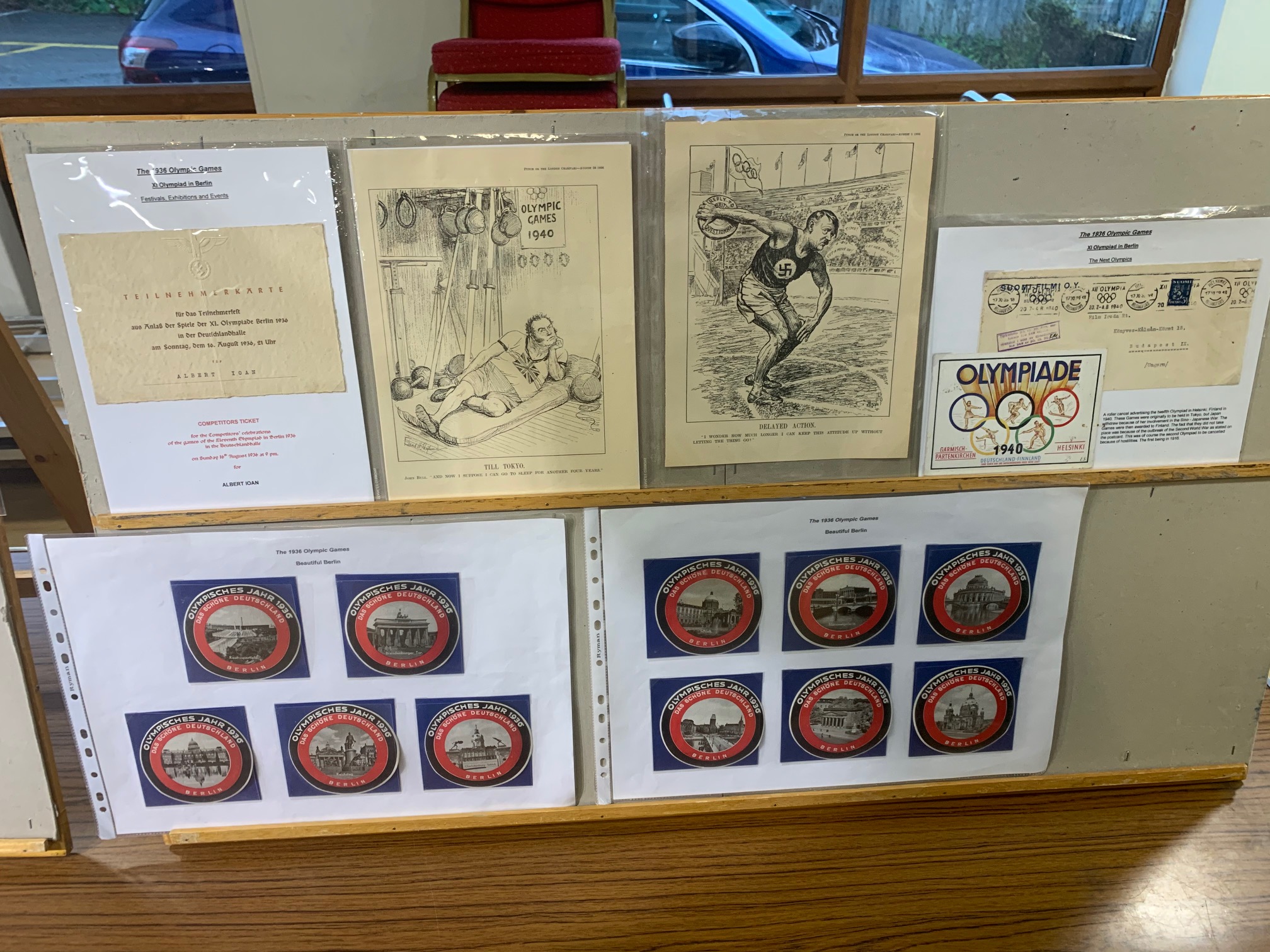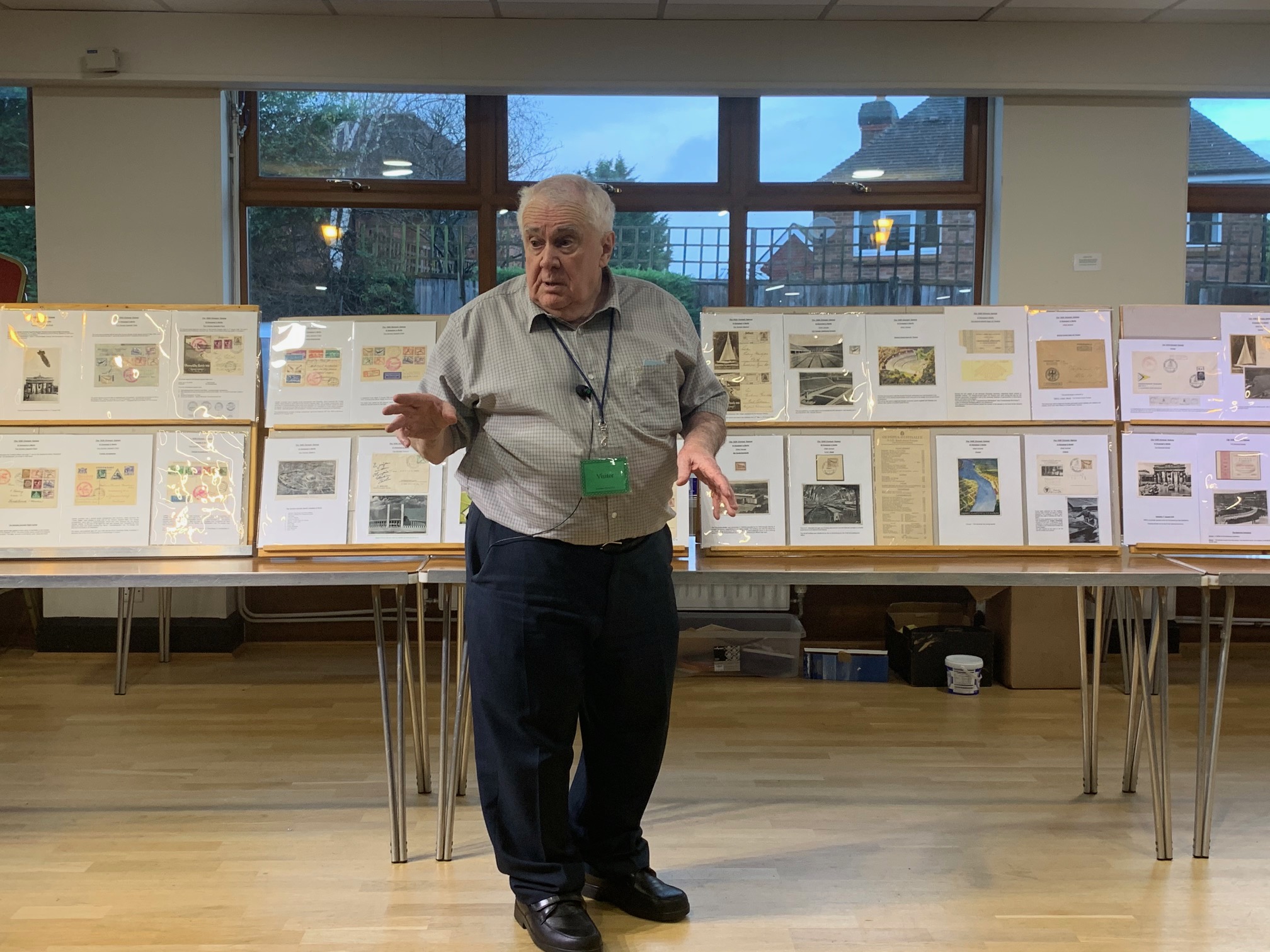In November we had a thoroughly entertaining display from Tony Bosworth on the 1936 Olympic Games. Tony dedicated his talk to the late Franceska Rapkin who had been his inspiration and mentor when he started on this subject, indeed he showed several rare items which had come from her collection.
The presentation started with a background history of the modern Olympics and how Germany was eventually awarded the Summer and Winter Olympics in 1936. To outdo the Los Angeles games of 1932, Reich Chancellor Adolf Hitler had a new 100,000-seat track and field stadium built, as well as six gymnasiums and many other smaller arenas. The games were the first to be televised, and radio broadcasts reached 41 countries. Filmmaker Leni Riefenstahl was commissioned by the German Olympic Committee to film the Games for $7 million. Her film, titled Olympia, pioneered many of the techniques now common in the filming of sports.
Hitler saw the Games as an opportunity to promote his government and ideals of racial supremacy and antisemitism. German Jewish athletes were barred or prevented from taking part by a variety of methods although some women swimmers did take part. Jewish athletes from other countries seem to have been side-lined in order not to offend the Nazi regime.
Material was shown from the Winter Games held in Bavaria including propaganda cards, postcards, stamps, postmarks, meter marks and ephemera. A special Winter Olympics Telegram was one of the highlights of this section of the display. Tony mentioned Sonja Henie, a skating champion who won Olympic Gold Medals in 1928, 1932 and 1936. She eventually became a Hollywood film star which brought back happy memories for some of the older members.
An Olympic Village was built for the Summer Games, the first being built 4 years earlier in Los Angeles. The games were held in fourteen different locations. There were 150 chalets with postal stationery cards, notepaper, envelopes and special postmarks being produced. A 7.6 tonne Olympic Bell was also used for the first time and taken round Germany before arriving at its final resting place. The Zeppelin LZ129 flew over the Olympic Stadium on the opening day of the Summer Games carrying mail. This mail bore special cachets and the rare vermilion variety was shown. Many postcards of the athletes were on the frames with Jesse Owens, winner of 3 gold medals having signed one of the items on display. An interesting aspect of these games was that the women were housed in different locations.
The modern use of the Olympic Flame began in 1936. It coincided with the advent of a long relay of runners carrying torches to bring the flame from Olympia to the site of the games. Once there, the torch is used to light a cauldron that remains lit until it is extinguished in the Closing Ceremony.
Unusual events were the Munich Chess Olympiad and the Dresden Postage Stamp Exhibition and Flower Show, not forgetting all the events that took place outside of the Olympics including many parties!
Rare material from all these aspects of the Olympics were admired by the members present. Tony’s lively and knowledgeable and enthusiastic discourse kept members deeply interested throughout – a splendid afternoon’s entertainment.
